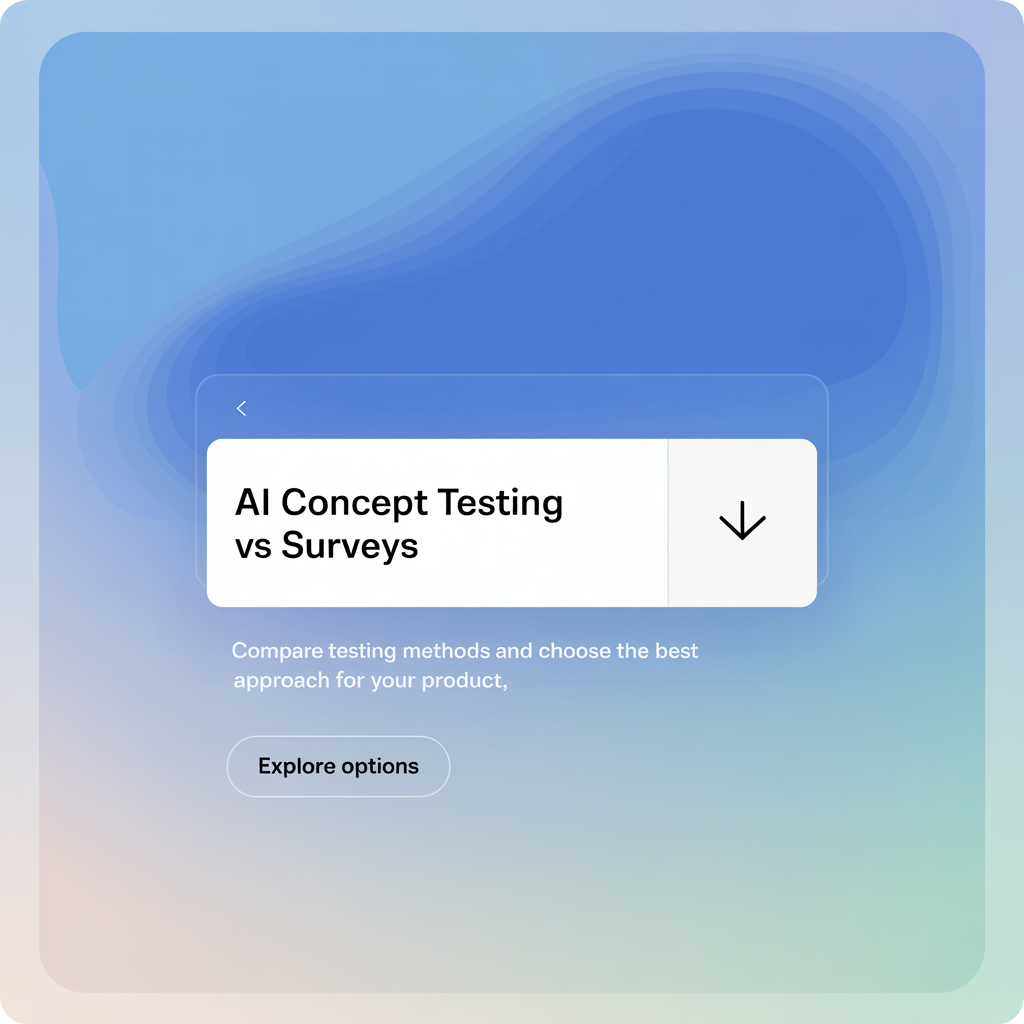
Why Traditional Surveys Fail to Predict Real Consumer Behavior
Traditional consumer surveys are plagued by systematic bias that disconnects them from real-world purchase behavior. When you ask people hypothetical questions about what they might buy, you get optimistic, socially-desirable answers—not actual shopping behavior. Professional survey-takers game the system for rewards. Survey fatigue leads to careless responses. Question framing influences answers more than the actual product.
Our benchmark study compared AI synthetic panels (trained on millions of real consumer behaviors from reviews, forums, and social conversations) against traditional online survey panels. We tested several hundred new CPG concepts across food, beverage, and personal care using identical visual stimuli and questions.
Synthetic Panels vs. Survey Panels: The Results
Both methodologies evaluated concepts on five key metrics using 5-point Likert scales: Overall Score, Purchase Interest, New & Unique, Solves a Need, and Virality. We used Purchase Interest scores to rank concepts from top to bottom, then compared the synthetic panel's ranking to the real consumer survey ranking.
Accuracy: R² = 0.70
The synthetic model explained approximately 70% of the variance in consumer rankings—a strong correlation showing it captures the real behavioral patterns that drive purchase decisions. The remaining 30% reflects category-specific nuances that require additional calibration.
But here's what the correlation misses: Surveys don't measure real behavior—they measure what people claim they'll do when there's no commitment required. The synthetic panel is trained on actual consumer language from millions of product reviews and social conversations, capturing how people actually talk about products they buy versus products they ignore.
Speed: 14 Days → 5 Minutes
Traditional surveys averaged fourteen calendar days from brief to final report. The synthetic panel computed and returned a full dashboard of scored concepts in under five minutes, enabling multiple rounds of testing within one workday.
This speed advantage isn't just about convenience—it changes what's possible. You can test dozens of variations, immediately see what resonates, iterate based on real patterns, and test again before lunch. Traditional surveys lock you into slow, expensive cycles that discourage experimentation.
Cost: $23,500 → $0-49/month
Median cost per traditional quantitative concept test: $23,500. AI for CPG synthetic panel: $0-49 per month for unlimited concept screening.
Redirecting these cost savings funds additional concept iterations, qualitative and quantitative validation testing, in-home use tests, price sensitivity analysis, or pilot marketing programs.
The Real Difference: Behavioral Data vs. Survey Opinions
Traditional surveys ask hypothetical questions and record what people say they'll do. Synthetic panels trained on real consumer behavior analyze millions of authentic datapoints—product reviews, forum discussions, social media conversations—to understand how consumers actually talk about products when they're not being surveyed.
This captures:
- Share of voice: What percentage of consumers prioritize health vs. convenience vs. sustainability vs. price
- Sentiment patterns: Which product attributes drive positive vs. negative reactions in real conversations
- Authentic language: How people describe products they love versus products they regret buying
- Unprompted feedback: What actually matters to shoppers when there's no survey framing effect
Survey respondents give you what they think you want to hear. Behavioral data shows you what they actually do.
How to Use This in Your Workflow
Use the synthetic panel to rapidly screen early-stage ideas at the front end of innovation, identifying which concepts deserve further investment. This approach shaves months off the traditional process.
Then, conduct traditional qualitative and quantitative testing to explore finalist concepts in more depth, validate assumptions, and build stakeholder confidence before launch.
The synthetic panel doesn't replace qual and quant—it makes them more efficient by ensuring you only invest in testing concepts that show real behavioral signals, not just survey optimism.
Study Scope
This benchmark covers diverse concepts across food, beverage, and personal care categories. While absolute scores may vary by category, the improvements in speed, cost, and behavioral accuracy hold across CPG segments.
Ready to test concepts in minutes instead of weeks? Start screening with AI for CPG's synthetic consumer panel today.
